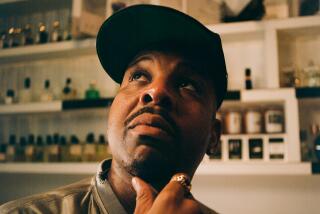DEFINITIVE : A Little Dab Will Do If the Pulse Is Right
- Share via
Most of fashion appeals to the senses of sight and touch. Perfumes and colognes add the dimension of smell that velvet or gold cannot.
Although fragrances today are defined by the sensual aura they create, their origin isn’t as romantic. Since Biblical times, man has used sweet scents to mask bad odors, usually in the form of incense. The word perfume comes from a Latin term, “through the smoke.”
Myrrh and frankincense were used regularly when an animal sacrifice was burned, then incense began to be burned to symbolize a sacrifice.
The ancient Egyptians and Greeks regularly used oils of almond, honeysuckle and jasmine after bathing. This use of fragrance fell into disuse until the Middle Ages, when traders to the Far East found that potent perfumes were made by combining secretions from the glands of different animals such as musk and ambergris.
Cologne originated in the 18th Century, when an Italian barber set up shop in the German city of Cologne and began applying a homemade mix of lemon, orange and mint oils in an alcohol base to the faces of the men he shaved. The scent was popular, and the barber began bottling and selling it under the label “Eau de Cologne.”
Whether you’re wearing perfume or cologne, be sure to apply it to the arterial points--either side of your neck, behind the ear, on the back of the knee--based on the theory that these are the warmest spots of the body, and the warmth keeps the scent alive.






